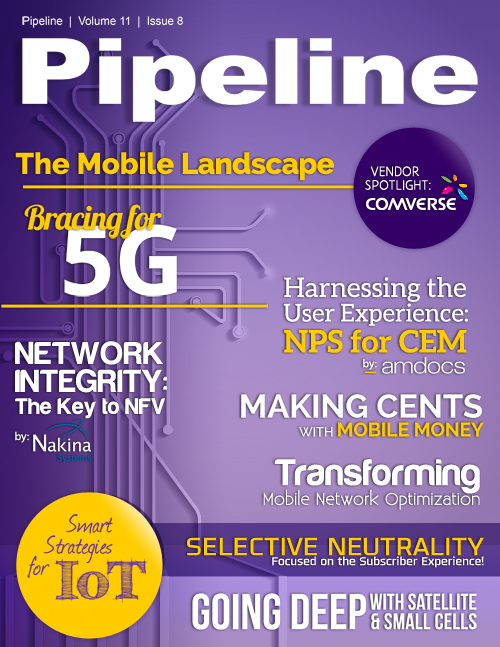Selective Neutrality Focused on the Subscriber Experience!
By: Thomas Vasen
 The debate over net neutrality is hotter now than ever, but one critical angle constantly left out is how to guarantee and protect the subscriber’s experience.The latest FCC proposal expected
in Q1 is based on: “No blocking, no throttling, no paid prioritization,”as hinted by Chairman Tom Wheeler recently at CES in Las Vegas, “except for reasonable network management.” And there is good reason for that last point. The debate on
allowing sponsored content delivery or prioritization is likely far from finalized, but differentiating to perform congestion control is clearly a necessity. The challenge is to make it fair for
everyone. Maybe the discussions shouldn’t focus so much on keeping networks neutral, but rather explore how to ensure a high quality of experience for all subscribers. The trick is to
make the IP Intelligence and congestion management solutions location-aware, adding a radio area network (RAN) perspective to the mix. Not only must experience management be service-aware, it
should also balance the needs for all subscribers in a same radio area.
The debate over net neutrality is hotter now than ever, but one critical angle constantly left out is how to guarantee and protect the subscriber’s experience.The latest FCC proposal expected
in Q1 is based on: “No blocking, no throttling, no paid prioritization,”as hinted by Chairman Tom Wheeler recently at CES in Las Vegas, “except for reasonable network management.” And there is good reason for that last point. The debate on
allowing sponsored content delivery or prioritization is likely far from finalized, but differentiating to perform congestion control is clearly a necessity. The challenge is to make it fair for
everyone. Maybe the discussions shouldn’t focus so much on keeping networks neutral, but rather explore how to ensure a high quality of experience for all subscribers. The trick is to
make the IP Intelligence and congestion management solutions location-aware, adding a radio area network (RAN) perspective to the mix. Not only must experience management be service-aware, it
should also balance the needs for all subscribers in a same radio area.
Policy control as a gatekeeper
The policy and charging rules function (PCRF) combined with the policy and charging enforcement function (PCEF) or traffic detection function (TDF) are often seen as the gatekeepers of the modern mobile network architecture. It is where the individualized blocking is decided, either for selective services or as a result of volume quota management. Regardless,the focus is primarily on limiting the subscribers’ freedom to use their mobile broadband connection. If net neutrality rulings are enforced and all bits are to be treated equal, the PCRF is basically turned into an on/off switch for the broadband connection as a whole. It becomes a complicated situation, however, when incoming Skype calls should be equal to VoLTE calls. Neither can work in a neutral network with the mobile data quota depleted.
The subscriber will likely be in limbo and be confused with the service delivery – or lack thereof.
“What?? Did my push mail eat my quota so I can’t receive calls anymore?”
Policy control has so much more potential to manage the experience, as long as the services are differentiated as subscribers use them, and delivery prioritized when needed only. After all: price is not the main reason for a customer to churn: it’s actually due to the overall poor quality of customer service, according to the Accenture global customer satisfaction report. Now is the time to put the policy systems to work and enhance the subscriber experience.
Spectrum - a scarce resource
Even though technology advancements are able to significantly increase the capacity in a radio network with every subsequent mobile generation, the fact remains that spectrum is a shared resource of which there is limited supply. Not managing how it is used will, when usage increases, result in the unsustainable situation that everybody in the area will receive poor Quality of Experience (QoE) – too small an amount of bandwidth to deliver the services at an acceptable quality. A simple way of solving this is to limit the number of users that are allowed to attach to a cell. In urban areas, however, this would often result in a large group of customers who would not have any service at all. Because this is unacceptable, the traffic management needs to be service-aware, and only shape the delivery of the lower-prioritized services as graded by the subscribers. For example, suppose file transfer needs to be blocked and voice-over-IP calls prioritized. This means not treating bits equally and would have to be done on the whole network’s traffic. Making traffic prioritization location-aware would reduce the impact only to users in a particular cell, where the policy actions have the critical effect on all users. The rest of the network would still run all services at a best effort quality.





















